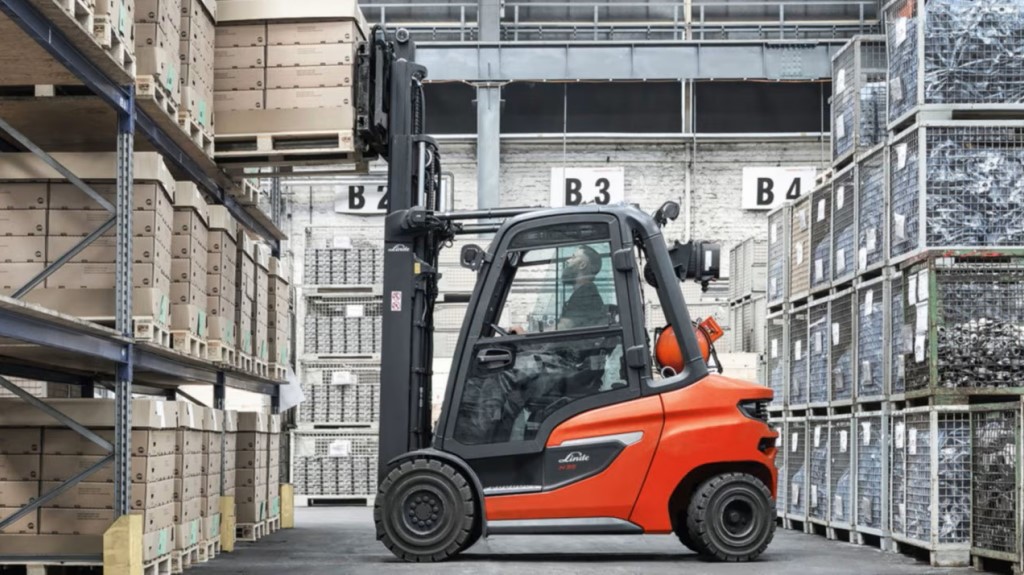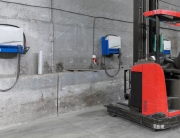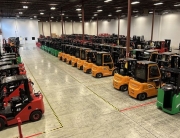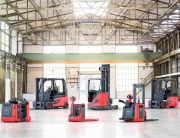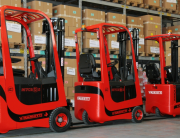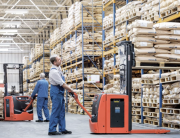Here is your ultimate guide to pneumatic forklift tires. You’ll discover everything you need to know about pneumatic tires for forklifts as well as other industrial equipment including what they are, the advantages and disadvantages, the different types, what applications they are good for, how much they cost, how to check the tires, and more. Click on each section to learn more or scroll through the entire post.
- What Are Pneumatic Tires? An In-Depth Definition
- Pneumatic Forklift Tires vs Other Types of Tires
- Applications that use Pneumatic Forklift Tires
- Advantages of Pneumatic Forklift Tires
- Disadvantages of Pneumatic Forklift Tires
- How to Convert Pneumatic Forklift Tires to Solid Forklift Tires
- Best Place to Buy Pneumatic Forklift Tires and Other Industrial Equipment
- Pneumatic Forklift Tire Maintenance: Complete Guide
- Pneumatic Forklift Tire FAQ
Looking for the best pneumatic forklift tires for your equipment? Contact Ri-Go Lift today.
Pneumatic Forklift Tires
1. What Are Pneumatic Tires? An In-Depth Definition
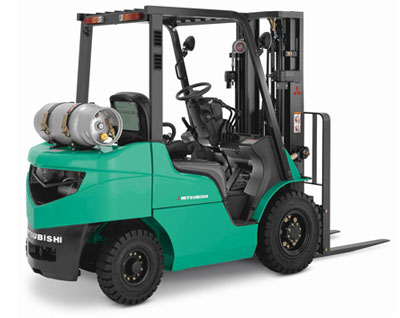
Pneumatic tires are found on most cars and trucks as well as industrial equipment like forklifts.
Pneumatic rubber tires are the the most common or standard type of tire found on personal vehicles including cars and trucks. However, pneumatic tires are also often used on different types of industrial equipment including forklifts and aerial lifts. In this post, we’re going to be looking specifically at pneumatic forklift tires.
You can use pneumatic forklift tires in both indoor and outdoor applications. They are, however, most effective when you operate them in locations that are free of sharp objects where they could get punctured easily. Punctures will cause pneumatic tires to deflate.
The following are some of the main characteristics of pneumatic forklift tires:
- They are made of thick rubber to help support the weight of your vehicle.
- They provide better traction on irregular terrain.
- They have thick treads that will give you improved traction for both braking and driving.
The above characteristics contribute to the performance and durability of your pneumatic tires.
2. Pneumatic Forklift Tires vs Other Types of Tires
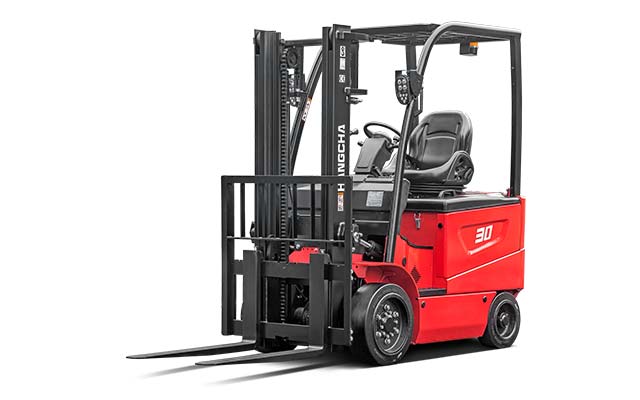
Cushion forklift tires are smooth and are best for indoor applications.
There are several different forklift tire categories:
- Cushion tires: These are also known as “press-on” tires.
- Pneumatic tires: These are also sometimes referred to as “air pneumatic.”
- Solid pneumatic tires: This type can also be referred to as “foam-filled.”
- Polyurethane tires: These are also called “poly” for short.
- Non-marking Tires: These tires won’t mark your floors.
Read on to learn more about each of these types.
Cushion Tires:
Cushion forklift tires are made of solid rubber bonded to an inner steel ring. This type of tire can also be referred to as a press-on tire. They are solid rubber tires that have been moulded onto a thin metal band. This band is usually made of steel. Cushion tires have a solid rubber tread that can either be a grooved or smooth pattern.
Cushion tires are designed to operate on smooth flat surfaces like concrete floors, so they are best suited for indoor applications such as warehouse or factory settings. In addition, they give you a smaller turning radius so they are a great choice if you need to maneuver your equipment in tighter spaces.
Even though cushion tires are usually used indoors, they are durable so you can use them for some light use outside especially if you are operating on a smooth surface.
Pneumatic Tires:
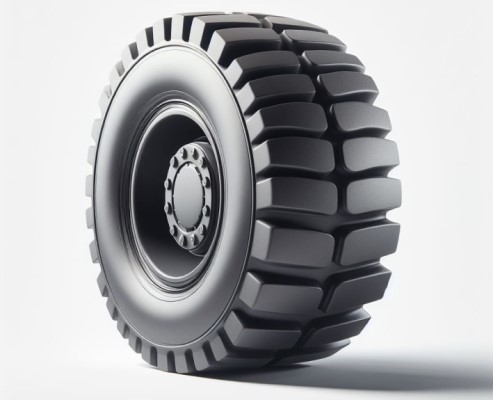
Pneumatic tires are great for operating on uneven surfaces.
Pneumatic tires are usually used outdoors. They are your best choice if you are operating on uneven surfaces such as gravel. Pneumatic tires are the type of tire you have on your car and they are primarily used outside.
Pneumatic tires have an outer tread and sidewalls that are designed with a combination of synthetic or natural rubber that has layers of fabric and wire. The inside of a pneumatic tire is usually empty and contains an inner tube that is filled with compressed air. This tube allows the tire to keep its form and to support the movement of the vehicle. The tire is attached to a metal hub. This hub is linked to the axle which gives stability and support.
Pneumatic tires need to be filled to a pressure level that has been designated by the manufacturer. The air pressure enables your tire to handle the right amount of load and perform properly on various terrains.
Pneumatic tires comes in a wide range of sizes that are suited to different industrial machines and applications. If you are looking for excellent shock absorption capabilities to aid in keeping your equipment stable and minimizing bumps and jolts during operation, pneumatic tires are your best choice.
Solid Pneumatic Tires:
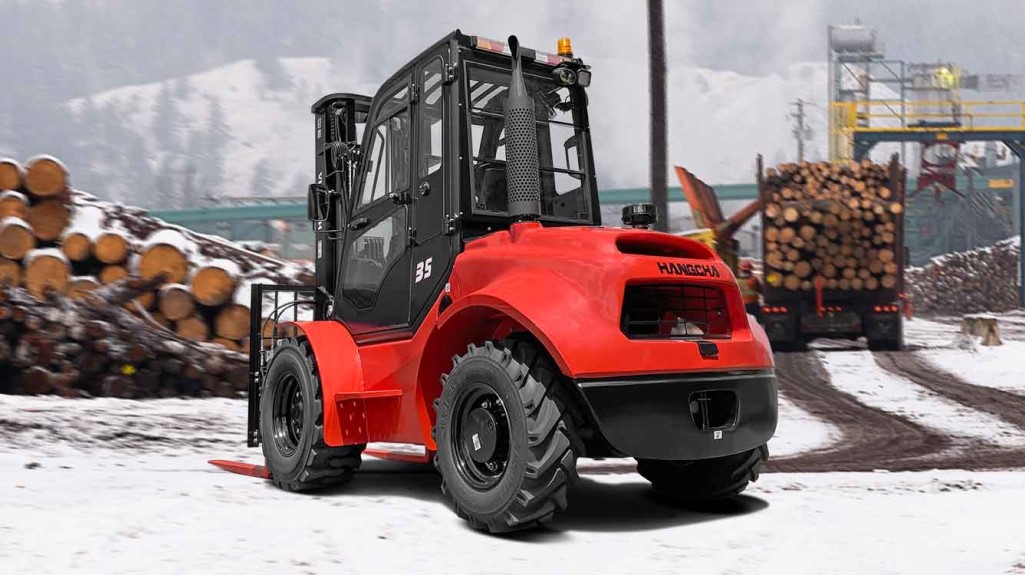
Solid pneumatic tires are a good choice for locations with sharp objects such as lumber yards.
Solid pneumatic tires, also known as “foam-filled” tires, are a type of pneumatic tires where foam replaces the traditional air-filled cavity. This hybrid design positions them between the conventional air-filled pneumatic tires and the more rigid cushion tires. The addition of foam makes the solid pneumatic tires hard and inflexible, which is why they are designated as “solid tires.”
Foam-filled tires are great for heavy machinery in various industries due to their resistance to deflation caused by punctures, unlike their air-filled equivalents. Their resistance to punctures means they are ideal for environments with sharp objects, such as scrap yards, construction sites, and lumber yards.
Polyurethane Tires:
Polyurethane tires are frequently used on equipment such as reach trucks, order pickers, and pallet jacks. These tires are made from material that is not only lightweight but also has a high resistance to splitting, tearing, and chunking under heavy loads.
Their design ensures a balance of excellent traction and low-rolling resistance, making them suitable for various operations while offering great durability. In comparison to pneumatic rubber tires, polyurethane tires tend to last about twice as long.
However, their use is recommended exclusively for indoor light-duty tasks, particularly in warehouse settings. Typically, these tires are used on lift trucks designed for specific tasks, including order pickers, pallet jacks, and reach trucks, rather than standard sit-down rider forklifts.
Non-marking Tires:
Non-marking tires are designed to eliminate scuff marks on indoor flooring caused by forklifts. These tires are constructed using hydrated silicas and special additives that ensure the floors remain unblemished.
Suitable non-marking tread options are available for various forklift types, including pneumatic, solid pneumatic, and cushion tires. While non-marking tires tend to have a shorter lifespan compared to traditional carbon-black tires, they also have a tendency to accumulate static electricity. To counteract this, it’s necessary to equip your forklift with an anti-static strap to safely dissipate any electrical build-up.
3. Applications that use Pneumatic Forklift Tires
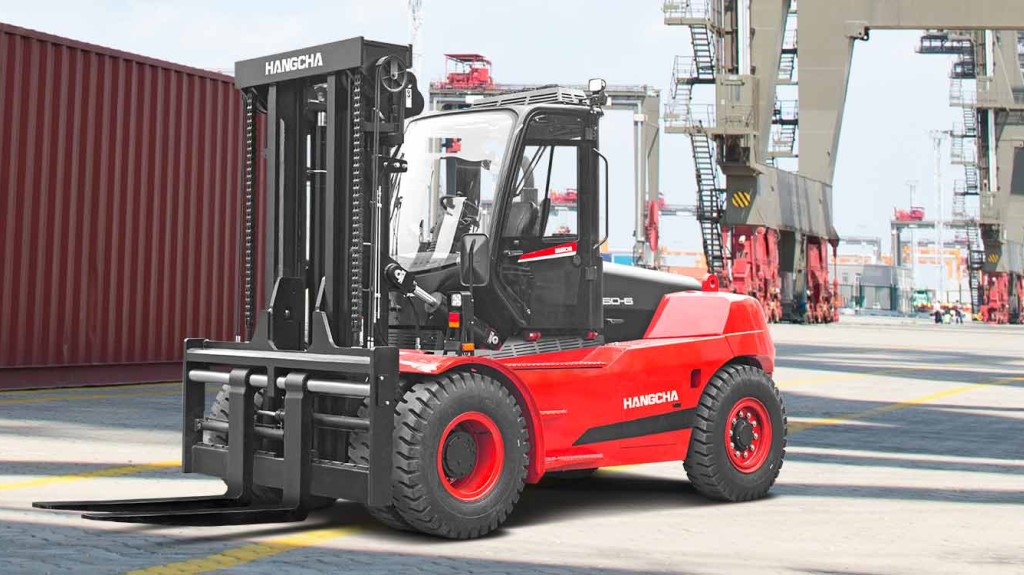
Pneumatic tires are the perfect choice for outdoor applications.
Pneumatic forklifts are great for outdoor settings such as:
- Agriculture
- Construction zones
- Oil and gas operations
- External warehouse environments
The air-filled pneumatic tires are better suited to environments where the risk of punctures from debris is minimal. However, environments with a high incidence of sharp materials, like scrap yards, might find them less suitable. Prolonged use indoors can result in discomfort for the operator, as the air-filled tires may cause the forklift to bounce, leading to a less smooth ride.
The design of pneumatic tires is best for navigating uneven outdoor landscapes. They are the tire of choice for off-road forklift applications. Their larger size and adaptability allow them to mould to uneven surfaces, ensuring a firm grip, which is essential for sites like construction areas, logging camps, and lumber yards.
For operations inundated with sharp objects, solid pneumatic tires are the best option, as their foam-filled interiors are resistant to deflation, setting them apart from their air-filled counterparts.
Air-filled pneumatic tires are predominantly found on sit-down style internal combustion forklifts, particularly those designed for heavy-duty tasks.
4. Advantages of Pneumatic Forklift Tires
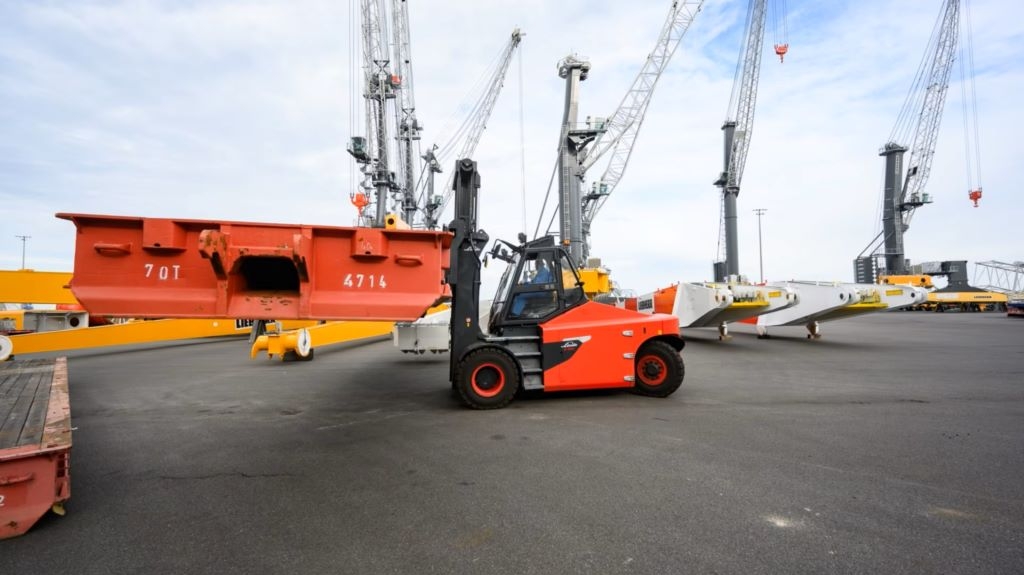
Pneumatic tires will give your operators a more comfortable ride.
Pneumatic forklift tires have many great advantages including the following:
- Enhanced Rough Terrain Handling: Pneumatic tires excel in outdoor environments with uneven surfaces like gravel, thanks to their ability to provide a smoother ride.
- Superior Shock Absorption: This inherent shock absorption makes pneumatic tires ideal for protecting cargo from jolts and bumps on uneven job sites.
- Increased Operator Comfort: The improved shock absorption translates to a smoother ride, leading to reduced operator fatigue and enhanced comfort during operation.
- Versatility Through Improved Traction: Pneumatic tires offer superior traction, making them suitable for diverse applications. They perform well on uneven terrain, indoors, on pavement, and off-road. This enhanced grip translates to better stability and reduced slippage on various surfaces like gravel, dirt, and grass.
- Reduced Floor Damage: The softer construction of pneumatic tires minimizes the risk of scratches and other damage to warehouse floors.
- Improved Maneuverability: The higher profile of pneumatic tires provides increased ground clearance, making them superior for navigating rough terrains like gravel.
- Cost-Effectiveness: Compared to solid pneumatic or cushion tires, pneumatic tires are generally a more affordable option.
5. Disadvantages of Pneumatic Forklift Tires
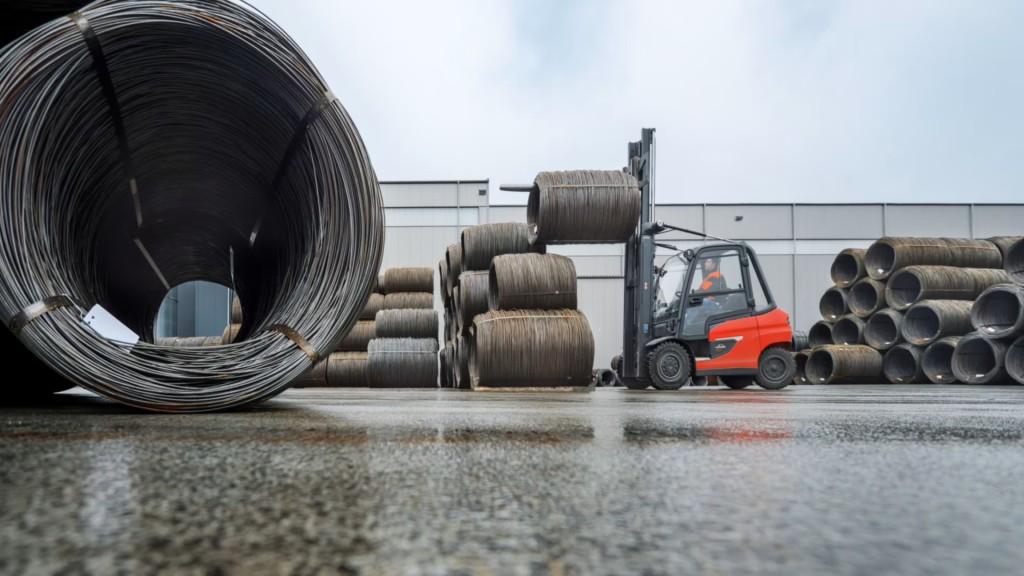
Pneumatic forklift tires are susceptible to punctures.
Here are some disadvantages to pneumatic forklift tires to consider:
- Limited Indoor Suitability: Pneumatic tires’ tendency to bounce can lead to operator discomfort in smooth, indoor environments. This bouncing effect may not be ideal for precise maneuvering tasks.
- Increased Puncture Risk: Pneumatic tires are vulnerable to punctures from sharp objects like debris, metal, screws, and nails. This susceptibility to deflation can be a concern in environments with a high likelihood of such hazards.
- Air Pressure Maintenance: Unlike solid pneumatic (foam-filled) or solid cushion tires, which are immune to air loss, pneumatic tires require regular monitoring of air pressure levels due to potential deflation or valve stem malfunctions. This adds an extra layer of maintenance compared to non-pneumatic options.
6. How to Convert Pneumatic Forklift Tires to Solid Forklift Tires
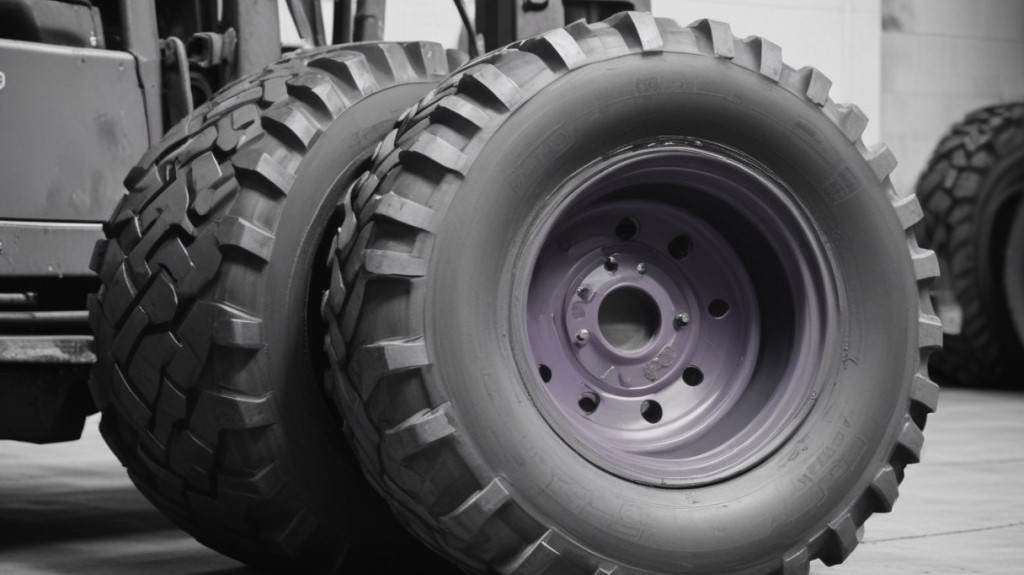
Ask a professional to do the conversion for you.
Considering a switch from pneumatic to solid forklift tires? Here’s a breakdown of the conversion process and some key points to remember.
The Conversion Process:
- Step 1 – Wheel Removal: The initial step involves dismounting the wheel assembly from the forklift.
- Step 2 -Tire Cleaning: The interior of the tire needs thorough cleaning to remove any liquids like water or tire sealant that could hinder the foam-filling process.
- Step 3 -Foam Filling: A two-component liquid urethane is injected into the tire through the valve stem for filling.
- Step 4 -Sealing: Following the foam injection, the valve stem is securely sealed.
- Step 5 -Curing: The filled tire needs to be laid flat for a designated curing period (ranging from 24 hours to a few days) to allow the liquid to solidify completely, replacing any remaining air.
Important Considerations:
Downtime: The curing process can take up to several days, rendering your forklift inoperable during that time. If downtime is critical, consider replacing the existing pneumatic tires with pre-manufactured solid pneumatic options.
Professional Assistance: Converting forklift tires can be a complex task. We highly recommend seeking the services of a qualified tire specialist who possesses the necessary expertise, experience, and equipment to ensure a safe and successful conversion.
Ready to Make the Switch?
We understand the decision to convert your forklift tires requires careful consideration. Our team at Ri-Go Lift is here to assist you throughout the process, from initial consultation to finding the right solution for your needs.
7. Best Place to Buy Pneumatic Forklift Tires and Other Industrial Equipment
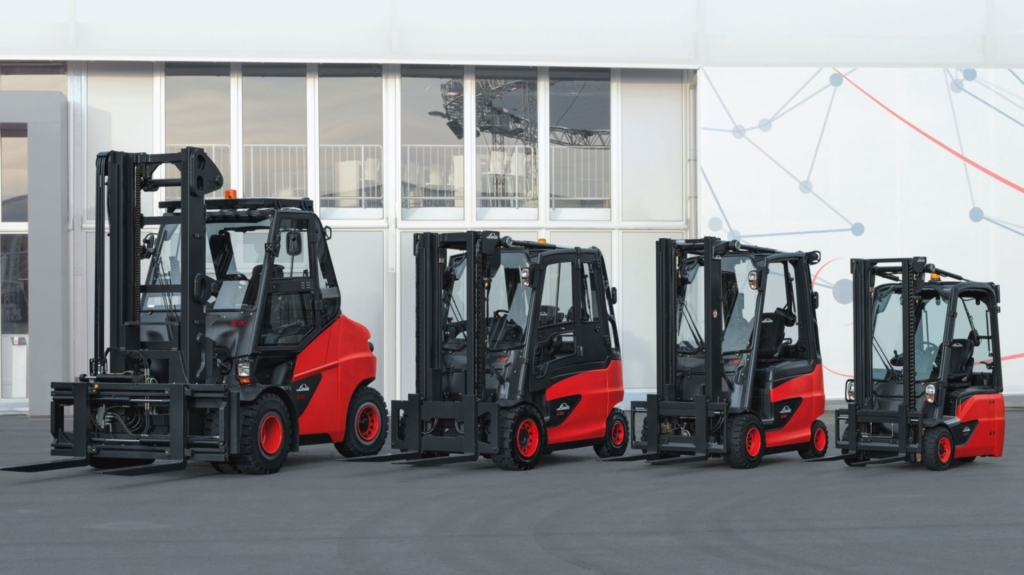
Work with a reliable forklift vendor.
Selecting the right supplier for your forklift tires plays a crucial role in maximizing performance, minimizing costs, and boosting overall productivity. Here’s why partnering with a trusted vendor is essential:
Benefits of a Reliable Forklift Tire Partner:
Quality & Authenticity: Gain access to genuine, high-quality tires from reputable forklift tire manufacturers.
Expert Support: Benefit from after-sales support, including installation guidance and ongoing maintenance expertise from qualified professionals.
Choosing Your Forklift Tire Supplier:
A meticulous approach to selecting your tire vendor ensures you get the most out of your investment. Here are key factors to consider:
- Vendor Reputation: Seek vendors with a well-established, positive track record in the industry.
- Tire Quality: Ensure the offered tires meet the highest quality standards.
- Compatibility: Verify compatibility between the tires and your specific forklift equipment.
- Competitive Pricing: Compare prices to secure the best value for your needs.
- After-Sales Support: Choose a vendor with a robust after-sales support program to address any installation or usage concerns.
Forklift Tire Acquisition Channels:
Now that we’ve established the significance of partnering with the right vendor, let’s explore the two primary methods for acquiring pneumatic forklift tires:
- Authorized Forklift Dealers:
- E-commerce Retailers:
1. Authorized Dealers: Your One-Stop Shop for Pneumatic Forklift Tires
Authorized equipment dealerships are your trusted partners for all things pneumatic forklift tires. They go beyond just selling tires; they offer a comprehensive solution, streamlining the entire process from start to finish.
Benefits of Authorized Dealerships:
- Expert Tire Selection: Their team of material handling specialists possesses the expertise to assess your specific needs and recommend the optimal pneumatic tires for your application.
- Seamless Ordering: They simplify the ordering process, ensuring you get the right tires at the right time.
- Professional Installation: Their trained technicians handle the installation efficiently and to the highest standards.
- Ongoing Maintenance Support: Dealerships provide ongoing maintenance support, ensuring your forklift tires perform optimally throughout their lifespan.
Choosing an authorized dealership means you benefit from a one-stop shop for all your pneumatic forklift tire needs. This eliminates the need to manage multiple vendors and ensures a smooth, seamless experience.
2. E-commerce Retailers:

Online retailers offer an alternative channel for acquiring pneumatic forklift tires. While this method provides a certain level of convenience, it’s essential to weigh the potential drawbacks before making a purchase.
Finding Online Retailers:
Conduct an internet search using terms like “buy forklift tires online” to identify potential vendors.
Considering the Limitations:
Limited Customer Support: A focus on reduced overhead can sometimes translate to reduced customer service resources. This may leave you with minimal assistance in navigating crucial aspects like tire selection, compatibility verification, and after-sales support.
The RIGO Advantage:
At Ri-Go Lift, we understand the complexities of forklift tire selection and maintenance. Our team is here to simplify the process and ensure you get the right tires for your specific equipment.
- Expert Guidance: Simply provide your equipment details (make, model, and serial number), and our specialists will guide you through the entire process.
- Seamless Procurement: We’ll handle the ordering process to ensure you receive the appropriate tires efficiently.
- Professional Installation: Our qualified technicians will install the tires on-site, minimizing downtime and disruption to your operations.
- Ongoing Maintenance Plans: We offer comprehensive maintenance plans to keep your forklift tires performing optimally throughout their service life.
Contact Ri-Go Lift today and let our team ensure your pneumatic forklift tire needs are met promptly and professionally.
8. Pneumatic Forklift Tire Maintenance: Complete Guide
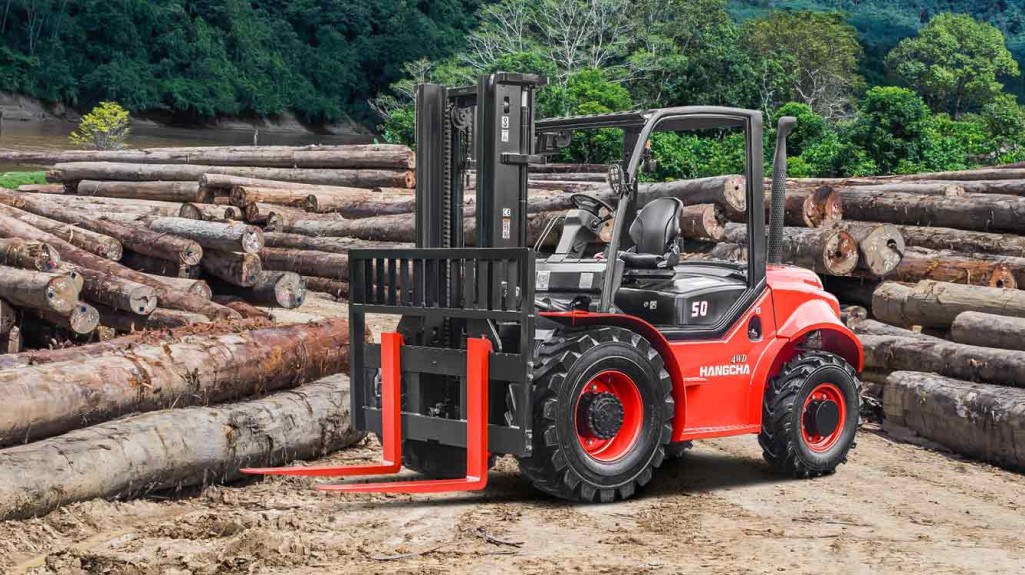
Make sure you keep your forklift tires well-maintained.
Forklift Tires: Essential Maintenance for Optimal Performance
Forklift tires are a crucial investment, demanding regular maintenance to ensure safety, performance, and longevity. Unlike “set and forget” solutions, these tires require ongoing care to maximize their lifespan and operational efficiency.
Maintenance Tailored to Your Tires:
It’s important to note that specific maintenance requirements can vary depending on the type of pneumatic tire you’re using. Always consult the manufacturer’s recommendations for the most accurate guidelines. Additionally, RIGO’s tire specialists possess the expertise to provide valuable insights and recommendations tailored to your specific tires.
Extending Tire Life Through Maintenance:
Regular maintenance plays a critical role in maximizing the return on investment for your expensive industrial equipment tires. Here’s a breakdown of key maintenance activities:
- Understanding Your Type of Tire
- Operator Training
- Visual Inspections
- Tire Pressure Monitoring
- Tread Wear & Depth Checks
- Tire Rotation
- Scheduled Maintenance
- Promoting Good Driving Habits
- Tire Tracking Practices
Read on to learn more about each of the above activities.
1. Understanding Your Type of Tire:
Using the correct pneumatic tires on your forklift is essential for ensuring optimal performance and safety. The forklift’s data plate provides the most straightforward method for determining the recommended tire type.
Consult the manufacturer’s specifications to ensure your forklift is equipped with the appropriate tires. If there’s a discrepancy, reach out to the manufacturer or your authorized dealer for clarification or rectification.
Here’s why matching tire types is crucial:
- Enhanced Stability: The designated tire type is specifically engineered to provide optimal stability for your forklift, minimizing the risk of tipping or accidents in dynamic work environments like warehouses or construction sites.
- Safety First: Equipping your forklift with the appropriate tires is a proactive measure to prevent potential safety hazards that could arise from mismatched or unsuitable tires.
- Maximized Equipment Lifespan: Using the recommended tire type promotes even wear and tear, extending the overall life of both your tires and your forklift. This reduces the need for premature replacements and repairs.
- Cost-Effectiveness: Matching tire types helps you avoid unnecessary expenses associated with replacing mismatched or unsuitable tires prematurely. Additionally, it reduces long-term maintenance costs by promoting even wear and tear.
2. Operator Training
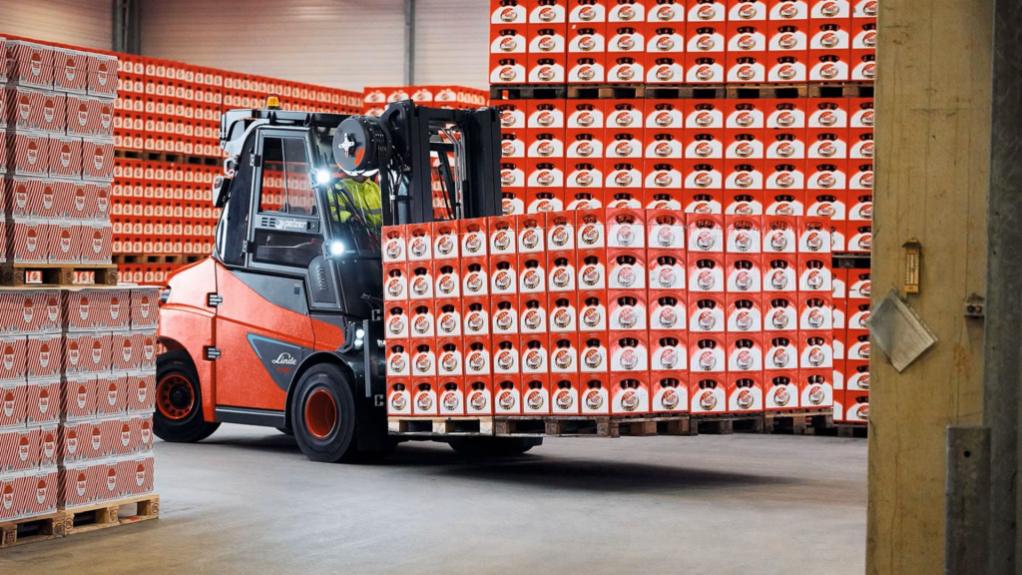
Operator training is extremely important.
Operator safety is paramount when it comes to forklift maintenance. Never allow untrained personnel to handle these critical tasks.
Equipping Operators for Success:
Comprehensive training empowers your forklift operators with the theoretical foundation and practical skills necessary to perform tire maintenance tasks effectively and safely. This training goes beyond typical car tire knowledge, addressing the specific demands and techniques required for industrial equipment tires.
Training Essentials:
Before assigning any maintenance tasks, ensure operators possess a thorough understanding of the following:
- Tire Maintenance Fundamentals: This training can involve a combination of written manuals, video tutorials, or live demonstrations led by a qualified mechanic. Operators should learn how to identify potential issues during tire inspections.
- Dedicated Tools & Equipment: The training program should cover the proper use and function of all tools utilized in forklift tire maintenance.
- Tire Pressure Adjustment: Operators must receive in-depth instruction on safe and proper tire pressure adjustment procedures. This critical aspect of pneumatic tire maintenance requires a clear understanding to ensure optimal performance and safety.
- Safety Protocols: A crucial element of training is emphasizing safety measures during maintenance. This includes safe positioning for inflation procedures to minimize the risk of injury in case of unexpected tire pressure release.
By investing in proper operator training, you can foster a culture of safety and equip your team with the necessary knowledge and skills to perform routine forklift tire maintenance effectively while minimizing potential risks.
3. Visual Inspections
Regular pre-operation inspections are crucial for preventing accidents and maximizing the lifespan of your forklift. These inspections, as mandated by OSHA, must be conducted “at least daily” and include a thorough evaluation of tire condition and pressure.
The Importance of Tire Inspection:
Improper tire pressure and damage can lead to dangerous blowouts and compromised equipment performance. A daily visual inspection helps identify potential issues before they escalate into safety hazards.
Key Inspection Points:
- Tire Pressure (Daily): Start each workday by verifying the correct tire pressure. Both underinflation and overinflation can cause tire blowouts. Underinflated tires may exhibit a “spongy” feel during operation.
- Physical Damage: Inspect tires for any signs of physical damage, including cracks, punctures, or cuts.
- Sidewall Integrity: Examine the sidewalls for weaknesses or signs of damage.
- Tire Chunking: Be alert for missing pieces of tread, indicating potential tire failure.
- Tread Wear: Check for excessive tread wear, cuts, or bulges that may compromise performance.
- Debris Buildup: Remove any dirt, substances, or debris accumulation that could affect tire integrity.
- Valve Stem & Cap: Ensure the tire inflation nozzle is properly installed and functioning. Additionally, verify that valve caps are securely fastened.
Maintaining a Safe Environment:
Beyond the tire inspection itself, operators should take the precautionary step of removing any potential hazards from the work area that could damage tires. This includes clearing away debris, potholes, liquids, or any other obstacles that could compromise tire integrity before operating the forklift.
4. Tire Pressure Monitoring

You need to regularly monitor your pneumatic tire pressure.
Verifying and adjusting pneumatic tire pressure during pre-operation inspections is essential for two key reasons:
- Underinflation Hazards: Underinflated tires generate excessive heat as they flex more under load. This heat buildup can cause the tire to expand beyond its designed limits, leading to potential tire failure.
- Overinflation Drawbacks: Overinflated tires are more susceptible to impact damage and experience accelerated wear. This can significantly reduce the tire lifespan and compromise overall performance, including traction and braking capability.
Ensuring Optimal Pressure:
To guarantee a safe and efficient operation, consult the manufacturer’s recommendations to determine the correct tire pressure for your specific forklift. Inflate tires to the designated pressure using a reliable tire pressure gauge. Kicking the tire is an inaccurate and unreliable method for pressure assessment.
5. Tread Wear & Depth Checks
A crucial aspect of pneumatic tire inspection involves assessing tread depth. Tread depth indicators provide a visual reference for estimating remaining usable tread life.
The Importance of Tread Depth:
The tread pattern on a pneumatic tire plays a critical role in traction. As the tread wears down, the tire’s ability to grip the ground diminishes, increasing the risk of slips and slides.
Measuring Tread Depth:
The specific method for measuring tread depth may vary depending on the pneumatic tire tread style. Always consult the manufacturer’s recommendations to determine the most accurate measurement technique.
Minimum Allowable Tread Depth:
The manufacturer also specifies the minimum allowable tread depth for your forklift tires. Once the tread reaches this critical point, it’s imperative to replace the tire to ensure safe operation and optimal performance.
6. Tire Rotation
Implementing a regular forklift tire rotation program is an effective strategy to promote even tire wear and prevent premature tire failure. This process involves strategically repositioning the tires on the forklift to distribute wear more evenly across the entire tread surface.
Combating Uneven Wear Patterns:
Forklift tires are susceptible to various wear patterns if left unrotated. These uneven wear patterns can significantly reduce tire lifespan and compromise performance. Here’s a breakdown of common wear issues addressed through rotation:
- Side Wear (Shoulder Wear): This refers to excessive wear on the outer edges of the tread, often caused by factors like improper inflation or aggressive cornering.
- Center Wear: This indicates concentrated wear in the center portion of the tread, typically resulting from overinflation.
- One-Sided Wear: Uneven wear on a single side of the tire tread can be caused by alignment issues or overloading on one side of the forklift.
- Diagonal Wear: This presents as a diagonal pattern of wear across the tread, often associated with improper camber angles.
- Flat Spots: Flat spots develop on the tread surface due to sudden stops or hard braking.
7. Scheduled Maintenance
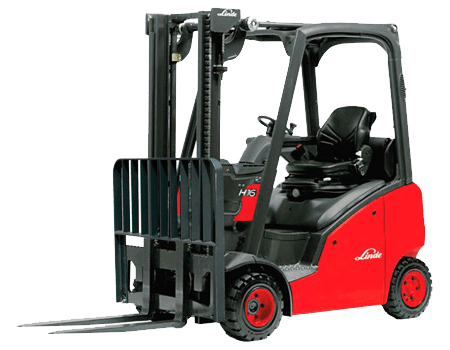
Keep your forklift tires well-maintained.
Integrating regular tire maintenance into your forklift maintenance program is crucial. Following the manufacturer’s recommended maintenance checks ensures your tires remain in optimal operating condition, preventing premature tire failure and minimizing safety risks. Regular maintenance also contributes to reduced tire repair costs and ensures proper maneuverability of your forklift.
Optimizing Your Forklift Maintenance Plan:
Review your current forklift maintenance schedule and ensure it incorporates routine tire inspections and maintenance. If your existing plan lacks these vital components, consider seeking professional assistance to maintain the integrity of your lift truck tires.
8. Promoting Good Driving Habits
Encouraging responsible forklift operation practices significantly extends the lifespan of your pneumatic tires. Here’s how adopting these habits can make a difference:
- Prioritize Maintenance: Discouraging operators from skipping routine maintenance checks helps identify and address potential issues before they escalate into bigger problems.
- Maintain Proper Tire Pressure: Educate operators on the importance of verifying and adjusting tire pressure according to manufacturer recommendations. This minimizes underinflation and overinflation, both of which can lead to premature tire wear and potential failure.
- Avoid Excessive Speeds: Instructing operators to operate forklifts within designated speed limits reduces wear and tear on tires.
- Respect Load Capacity Limits: Overloading forklifts puts undue stress on tires, accelerating wear and increasing the risk of damage. Enforce adherence to weight capacity limitations.
- Smooth Braking and Cornering: Encouraging operators to adopt smooth braking and cornering techniques minimizes harsh impacts that can damage tires and compromise stability.
- Eliminate Erratic Driving: Promote controlled and purposeful operation to prevent unnecessary maneuvers that can scuff or damage tires.
By fostering a culture of safe and considerate forklift operation, you can contribute to extending the service life of your pneumatic tires, reduce fuel consumption, and enhance overall safety within your warehouse environment.
9. Tire Tracking Practices
After investing in proper tire selection, purchasing, and maintenance, maximizing their lifespan hinges on effective tracking. Tire tracking empowers you to gather valuable data that informs future tire performance improvement strategies.
The Benefits of Tire Tracking:
By implementing a tire tracking system, you gain access to data-driven insights to guide your tire-related decisions. This data serves as a foundation for optimizing tire performance and expenditure.
Tracking Your Tires:
There are two primary methods for tracking your forklift tires:
- Manual Recording: Maintain a detailed log recording each purchase, repair, maintenance, or replacement performed on each tire.
- Digital Tire Tracking Solutions: Explore digital tire tracking solutions like GoCodes for a streamlined and efficient record-keeping system.
Analyzing Replacement Cycles:
Tracking purchase dates allows you to calculate replacement intervals based on recorded repairs and maintenance needs. This analysis helps identify potential areas for improvement.
Identifying Driving Habits:
By analyzing tracking data, you can gain insights into your operators’ driving habits. This can reveal inconsistent practices that deviate from manufacturer recommendations and your specific operational needs. With this knowledge, you can implement targeted training programs to correct improper techniques and promote optimal tire usage.
9. Pneumatic Forklift Tire FAQ
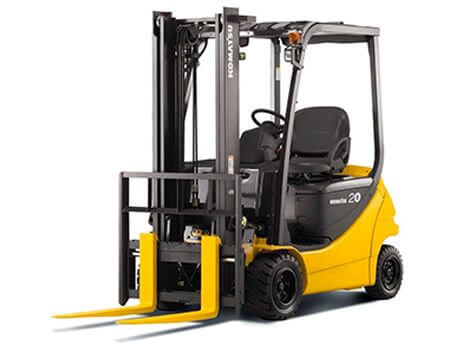
Pneumatic forklift tires are similar to car tires.
Q: What’s the difference between a “regular tire” and a pneumatic tire?
A: There actually isn’t much difference! The term “regular tire” typically refers to a pneumatic tire. These tires use air pressure to maintain their shape and provide cushioning.
Q: So, what are “solid rubber wheels” then?
A: Solid rubber wheels, also known as cushion tires, are a different option entirely. They consist of solid rubber bonded to a metal band and offer a puncture-resistant alternative to pneumatic tires.
Q: Why would I use pneumatic tires on an outdoor forklift?
A: Pneumatic tires excel in outdoor environments. Their thick tread provides superior traction, shock absorption, and stability when navigating uneven surfaces and rough terrain. This makes them ideal for construction sites, lumber yards, and outdoor warehouses.
Q: What are the benefits of pneumatic tires?
A: Pneumatic tires offer several advantages:
- High shock absorption: They provide a smoother ride for the operator by absorbing bumps and uneven terrain.
- Enhanced traction: The thick tread allows for better grip on various surfaces.
- Minimal rolling resistance: This translates to improved fuel efficiency.
- Extended durability: With proper care, pneumatic tires can last a significant amount of time.
Q: How long can I expect pneumatic forklift tires to last?
A: On average, pneumatic tires with regular use can last around a year. However, this lifespan depends on factors like usage patterns, the work environment, maintenance practices, and operator driving habits. Generally, they wear out faster than solid pneumatic tires.
Q: Are pneumatic tires prone to flats?
A: Yes, since they’re filled with air, pneumatic tires are susceptible to punctures from objects like nails or sharp stones. This can lead to flats and potentially reduce overall lifespan. Regular air pressure checks and adjustments are crucial for maintaining optimal performance.
Q: Can I prevent pneumatic tires from getting punctured?
A: Solid pneumatic tires, filled with solid foam instead of air, offer superior puncture resistance compared to traditional pneumatic tires.
Q: Do pneumatic tires have inner tubes?
A: Yes, air-filled pneumatic tires have a separate inner tube made of rubber, similar to a balloon. This inner tube sits between the wheel hub and the outer tread and holds the air that maintains the tire’s shape.
Q: Solid pneumatic tires don’t need air, right?
A: Correct! Solid pneumatic tires, also known as “tubeless pneumatic tires,” are filled with solid rubber foam and don’t require air pressure maintenance.
Q: Can I convert pneumatic tires to solid tires?
A: While not always recommended by manufacturers, it may be possible to convert air-filled tires to solid tires by filling them with a liquid that hardens inside. Foam-filled tires are a common example of this conversion.
By understanding these key distinctions between pneumatic and solid tires, you can make an informed decision on the best option for your specific forklift application and operational environment.
Looking for a Forklift Dealer You Can Rely On? Contact Ri-Go Lift
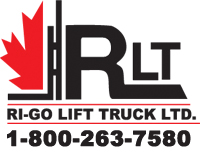
Since 1977, Ri-Go Lift Truck has been serving customers in Ontario and Quebec with everything they need for material handling. We are committed to providing you with quality service and a high level of customer satisfaction.
We are your authorized dealer for the following top brands:
- Linde Lift Trucks, Power Pallet Trucks, Tow Tractors and Stackers
- Hangcha Forklifts Full Lineup of Electric & IC Equipment
- Blue Giant Lift Trucks and Pallet Movers
- Komatsu Forklifts and Reach Trucks
- Mariotti Lift Trucks – The Worlds Smallest Lift Truck
- Baoli Lift Trucks
- Advance Sweepers and Scrubbers
- Skyjack Genie Booms and Scissor Lifts

In addition to our authorized distributorships, we can also provide you with:
- Large selection of used forklifts
- Operator Training Department – open 7 days a week
- Parts Departments – over 1.4 million dollars of parts on hand for all makes and models
- Service Department – highly trained technicians
- Leasing and Rentals
No matter what your material handling needs are, we can help. Contact us today to let us know how we can be of service.
What Our Customers Think…
“I’ve been using RIGO Lift for the last 3-4 years now for my equipment rental needs. They have a fantastic crew working together and they are VERY efficient and reliable as a whole. Whenever I need electric equipment which is hard to come by, I know they are always able to provide. Their equipment is rare to breakdown because they provide machinery that is well kept and in good condition. I definitely recommend you reach out to Steve and the team because you will not be disappointed!”
– Heloise Vieira



